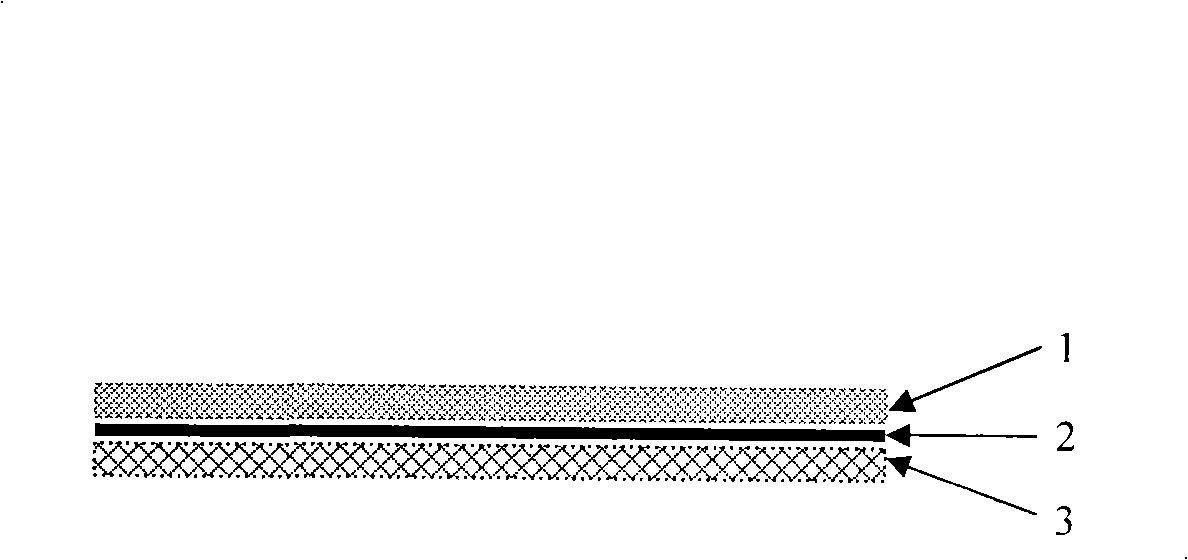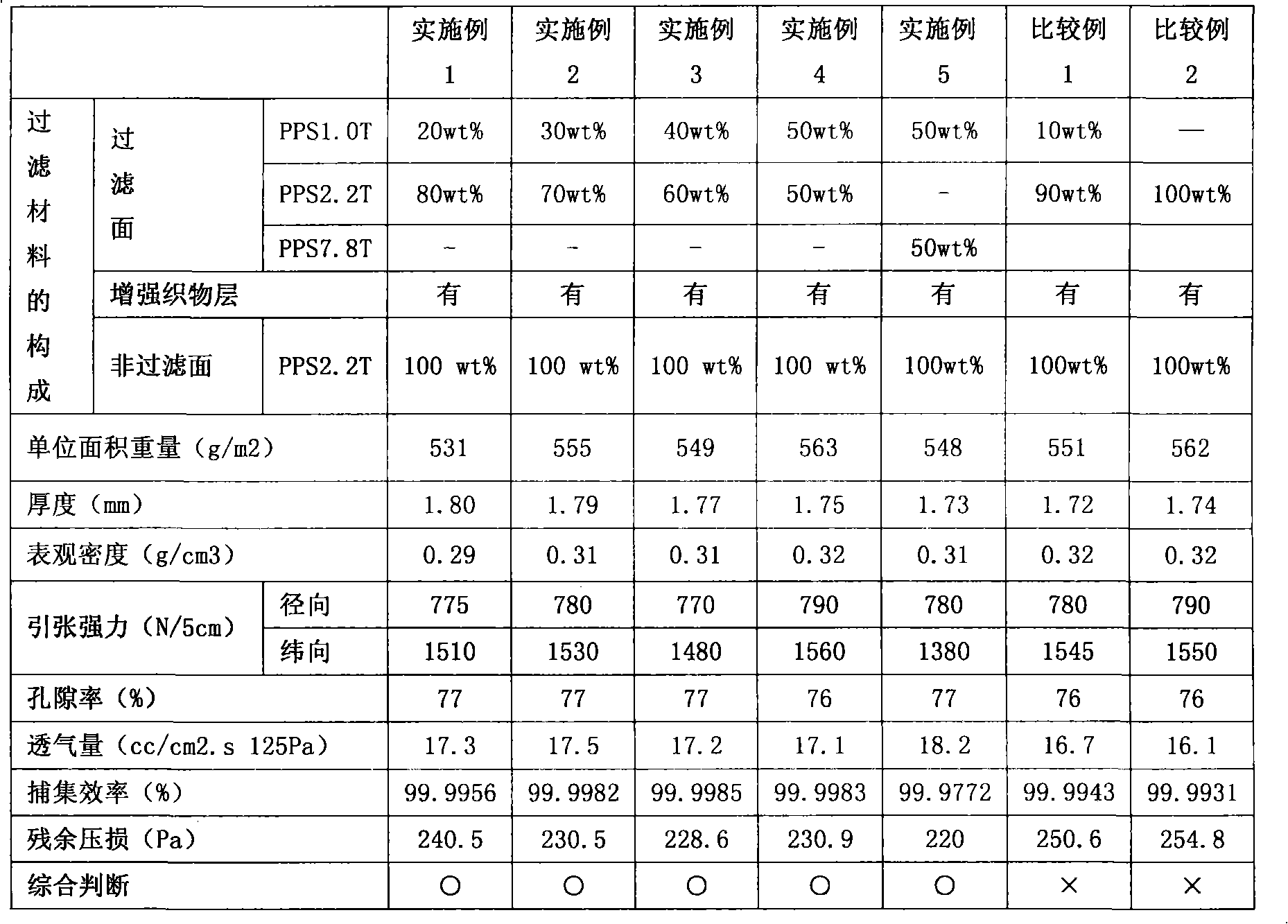Filter material and use
A filter material and filter surface technology, which is applied in the direction of filtration separation, dispersed particle filtration, and dispersed particle separation, etc., can solve the problems of reduced cleaning interval of filter felt, easy breakage, high pressure loss of filter felt, and increase the pressure loss Small size, excellent dust collection efficiency, and good thermal dimensional stability
- Summary
- Abstract
- Description
- Claims
- Application Information
AI Technical Summary
Problems solved by technology
Method used
Image
Examples
Embodiment 1
[0052] Using PPS staple fibers with a fineness of 2.2 decitex (average fiber diameter of 14.5 μm) and a piece length of 51 mm (“Tecon” manufactured by Toray Co., Ltd.), warp yarn 20S / 2 and weft yarn 20s were obtained. It was flat-woven to obtain a PPS staple fiber plain weave fabric with a warp density of 36 threads / 2.54 cm and a weft density of 15 threads / 2.54 cm.
[0053] Using this fabric as the base fabric, use 198g / m on one side 2 The weight per unit area of the laminated fiber web is 2.2 decitex (average fiber diameter 14.5 μm), PPS staple fiber with a length of 51 mm ("Tecon" S101-2.2T 51mm manufactured by Toray Co., Ltd.) and a fineness of 1.0 Dtex (average fiber diameter 9.7μm), PPS staple fiber with a length of 51mm is mixed at a weight ratio of 80:20. After the staple fiber is opened and carded, the needle density is 50 / cm 2 Obtained by needle punching, this fiber web forms the filter layer on the filter surface side. On the other side of the fabric at 198g / m 2...
Embodiment 2
[0055] As the fibers constituting the fiber web on one side of the filter surface, PPS staple fibers with a fineness of 2.2 dtex (average fiber diameter of 14.5 μm), a length of 51 mm and a length of 1.0 dtex (fiber diameter of 9.7 μm), and a length of 51 mm were divided into 70:30 The weight ratio is used in combination. As fibers constituting the fiber web on the non-filter surface side, 100 wt % of PPS staple fibers with a fineness of 2.2 decitex (average fiber diameter of 14.5 μm) and a piece length of 51 mm were used. Except for these, the filter material was obtained by the same method as Example 1. According to the JIS L 1096 standard, the tensile strength of the filter material is 780N / 5cm in the radial direction and 1530N / 5cm in the weft direction.
Embodiment 3
[0057] As the fibers constituting the fiber web on one side of the filter surface, PPS short fibers with a denier of 2.2 dtex (average fiber diameter of 14.5 μm), a length of 51 mm and a length of 51 mm of a piece of 1.0 dtex (fiber diameter of 9.7 μm) were mixed in a ratio of 60:40 Mixed use by weight ratio. As fibers constituting the fiber web on the non-filter surface side, 100 wt % of PPS staple fibers with a fineness of 2.2 decitex and a piece length of 51 mm were used. Except for these, the filter material was obtained by the same method as Example 1. According to the JIS L1096 standard, the tensile strength of the filter material is 775N / 5cm in the radial direction and 1510N / 5cm in the weft direction.
PUM
| Property | Measurement | Unit |
|---|---|---|
| The average diameter | aaaaa | aaaaa |
| The average diameter | aaaaa | aaaaa |
| Gram weight | aaaaa | aaaaa |
Abstract
Description
Claims
Application Information
 Login to View More
Login to View More - R&D
- Intellectual Property
- Life Sciences
- Materials
- Tech Scout
- Unparalleled Data Quality
- Higher Quality Content
- 60% Fewer Hallucinations
Browse by: Latest US Patents, China's latest patents, Technical Efficacy Thesaurus, Application Domain, Technology Topic, Popular Technical Reports.
© 2025 PatSnap. All rights reserved.Legal|Privacy policy|Modern Slavery Act Transparency Statement|Sitemap|About US| Contact US: help@patsnap.com


